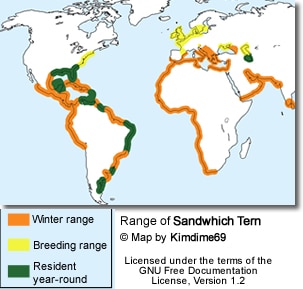Cinereous Harriers
The Cinereous Harrier (Circus cinereus) is a South American bird of prey of the harrier family.
Distribution / Range
Its breeding range extends from the Tierra del Fuego through Argentina and Chile to Bolivia, Paraguay and southern Brasil.
This bird can be found in different open habitats, ranging from lowland marshes to the Andean Altiplano at a maximum altitude of 4500 metres.
It is usually considered to be sedentary.
Description
Both males and females have a bright yellow, bare patch of skin at the base of the blackish-grey bill and orange-yellow legs.
The male’s plumage is dark grey above with black wingtips and a white rump. The underparts are pale grey, with a rufous streaked belly.
The female’s plumage is brown above, with a white rump, and cream colored underneath, with a streaked belly similar to the males. The female is larger than the male with an average size of 50 centimetres compared to the male’s 40 centimetres.
Juveniles resembles the adult female but is blackish-brown above and creamy buff below, with dusky streaking rather than barring.
Flight: This harrier has an elegant and soaring flight and is often encountered gliding over open habitats, scanning the ground for prey.
Nesting / Breeding
Eggs are usually laid after mid-November, and the young are fledged by January. Like other harriers, the Cinereous Harrier nests on the ground. The nest is a heap of rushes, grass or other vegetation, up to 40 centimetres across and 30 centimetres deep, which is placed on the edge of bed of rushes or in damp grass or scrub.
Diet / Feeding
Its diet is variable, due to a wide range and variety of habitats. Its usual prey are small rodents and birds, reptiles, amphibians and insects. It often feeds on downy chicks of coots and waders.
Calls / Vocalizations
This species is typically silent, except during the breeding season, when the male and female make rapid, chattering calls while engaged in aerial, courtship displays and when defending the nest and chicks.




